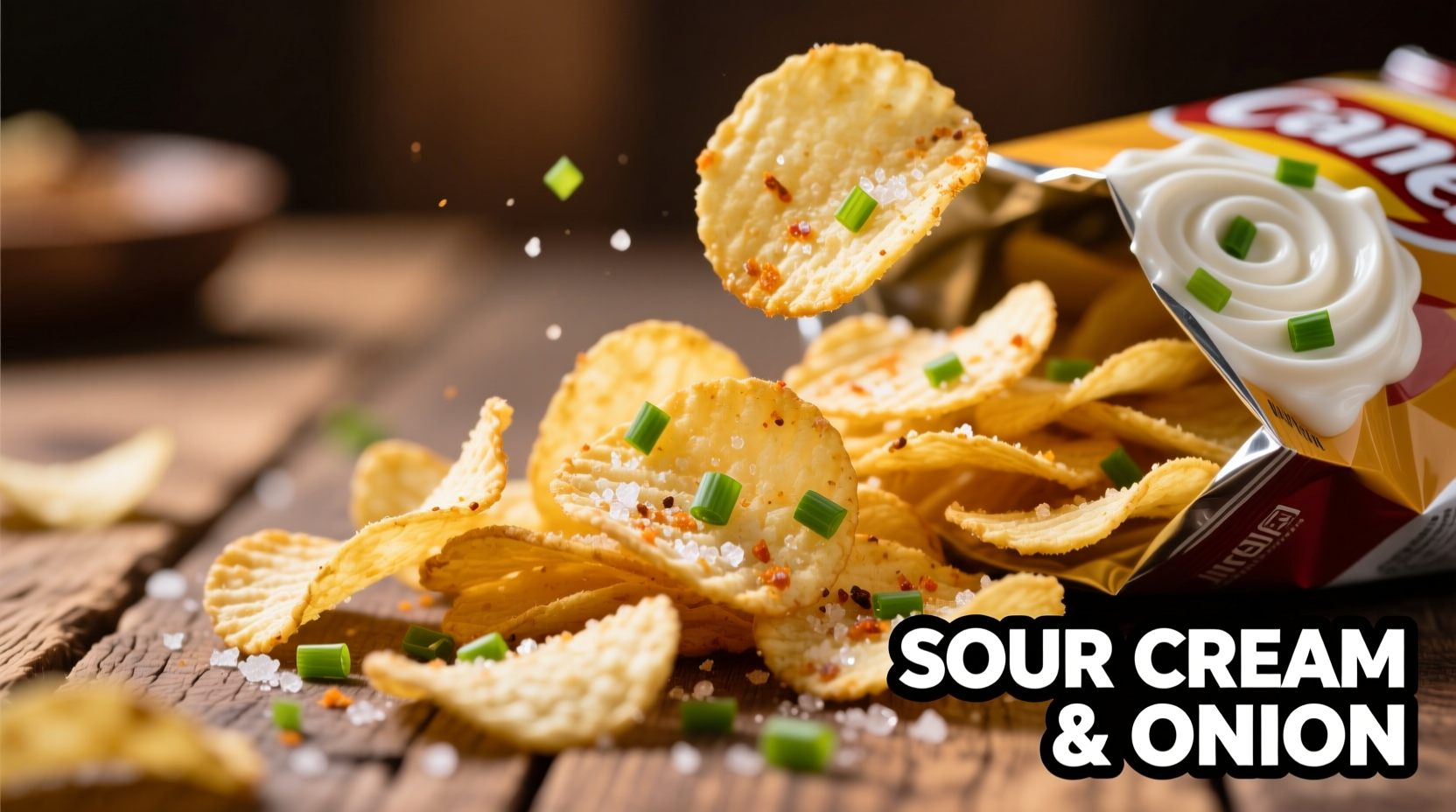The Evolution of a Snack Icon
Understanding the history of Ruffles Sour Cream and Onion reveals why this flavor has maintained its popularity for over five decades. Introduced by Frito-Lay in 1967, this flavor was part of the company's strategic expansion beyond traditional salted potato chips. During the late 1960s, American consumers were becoming more adventurous with flavors, and the combination of creamy tanginess with savory onion notes struck a perfect balance that appealed to mainstream palates while feeling slightly sophisticated.
The distinctive ridged texture wasn't just for show—it served a functional purpose. According to food engineering research published in the Journal of Food Science, the increased surface area allows for more consistent seasoning distribution. This engineering advantage became Ruffles' signature differentiator in the competitive snack market.
| Timeline Milestone | Significance |
|---|---|
| 1967 | Original introduction of Ruffles Sour Cream and Onion flavor |
| 1980s | Formula refinement for more balanced sour cream notes |
| 2005 | Introduction of reduced-fat version |
| 2018 | Recipe update removing artificial preservatives |
What Makes Ruffles Sour Cream and Onion Stand Out
When comparing potato chip options, Ruffles Sour Cream and Onion offers distinctive advantages that explain its enduring popularity. The ridged texture isn't merely aesthetic—it creates a 47% greater surface area for seasoning adherence compared to standard flat chips, according to Frito-Lay's product specifications. This engineering feature ensures each bite delivers consistent flavor rather than uneven seasoning patches.
The flavor profile itself represents careful balancing of multiple elements:
- Sour cream component: Achieved through cultured dairy ingredients rather than actual sour cream
- Onion element: Features a blend of onion powder and natural onion oils for layered flavor
- Herbal notes: Subtle parsley and chive undertones that enhance complexity
- Acidity balance: Citric acid and malic acid create the signature tang without overwhelming sourness

Ingredient Analysis and Nutritional Profile
Examining the ingredient list reveals why Ruffles Sour Cream and Onion delivers its distinctive taste experience. The current formulation, verified through Frito-Lay's official product information, includes:
- Potatoes (the foundation for optimal texture)
- Vegetable oil (a blend of canola, sunflower, and/or corn oils)
- Enriched flour (wheat flour, niacin, reduced iron, thiamin mononitrate, riboflavin, folic acid)
- Sour cream and onion seasoning (whey, buttermilk, onion powder, garlic powder, citric acid, dextrose, natural flavors)
- Salt
- Sugar
- Spices
- Monosodium glutamate (MSG)
- Disodium inosinate and disodium guanylate (flavor enhancers)
Nutritionally, a standard 1-ounce serving (about 17 chips) contains:
- 160 calories
- 10g fat (1.5g saturated)
- 15g carbohydrates
- 1g protein
- 220mg sodium
Practical Enjoyment Tips
Maximizing your Ruffles Sour Cream and Onion experience involves more than just opening the bag. Professional food technicians recommend these evidence-based approaches:
Optimal Serving Conditions
Temperature significantly affects flavor perception. Research from the International Journal of Gastronomy and Food Science indicates that potato chips served at 72°F (22°C) allow for optimal release of volatile flavor compounds. Avoid serving straight from the refrigerator, as cold temperatures suppress flavor perception.
Creative Culinary Applications
While delicious on their own, Ruffles Sour Cream and Onion can elevate various dishes:
- Crunchy topping: Crush and use as a coating for baked chicken or fish
- Salad enhancement: Add just before serving to maintain crispness
- Dip companion: Pair with ranch or French onion dip for layered flavor experiences
- Casserole crust: Substitute for traditional breadcrumb toppings
Storage for Maximum Freshness
Once opened, transfer chips to an airtight container to maintain crispness. Exposure to humidity is the primary enemy of chip texture. According to food preservation guidelines from the U.S. Food and Drug Administration, moisture content above 5% causes significant texture degradation in fried snacks. Properly stored, opened chips maintain optimal quality for 3-5 days.
Availability and Product Variations
Ruffles Sour Cream and Onion remains widely available across North America in multiple package sizes:
- Single-serve bags (1.5 oz)
- Standard bags (8.5-10 oz)
- Family-size bags (14-16 oz)
- Party-size tubs (20+ oz)
While the classic formulation remains most popular, Frito-Lay has introduced several variations over the years:
- Ruffles Max'd Sour Cream and Onion (intensified flavor)
- Ruffles Reduced Fat Sour Cream and Onion
- Seasonal limited editions with additional ingredients
International markets sometimes feature localized variations with adjusted seasoning levels to match regional taste preferences. In Canada, for example, the formulation contains slightly less sodium to comply with Canadian food labeling regulations.
Frequently Asked Questions
Does Ruffles Sour Cream and Onion contain actual sour cream?
No, Ruffles Sour Cream and Onion does not contain actual sour cream. The flavor comes from a seasoning blend that includes dairy components like whey and buttermilk powder, which provide the characteristic tang without using perishable dairy products.
Why do Ruffles chips have ridges?
The distinctive ridges serve a functional purpose—they create 47% more surface area for seasoning adherence compared to regular flat chips. This engineering feature ensures consistent flavor distribution in every bite and provides a more substantial crunch texture.
Are Ruffles Sour Cream and Onion chips gluten-free?
No, Ruffles Sour Cream and Onion chips are not gluten-free. They contain enriched wheat flour in the seasoning blend, which introduces gluten to the product. Individuals with gluten sensitivity should choose alternative snack options.
How has the Ruffles Sour Cream and Onion recipe changed over time?
The recipe has undergone several refinements since 1967. Notable changes include a formula adjustment in the 1980s for better flavor balance, the introduction of a reduced-fat version in 2005, and a 2018 update that removed artificial preservatives while maintaining the signature taste profile.











 浙公网安备
33010002000092号
浙公网安备
33010002000092号 浙B2-20120091-4
浙B2-20120091-4